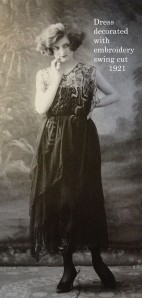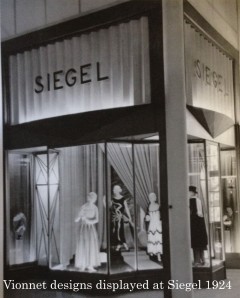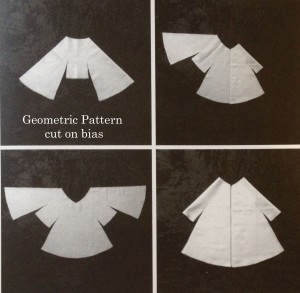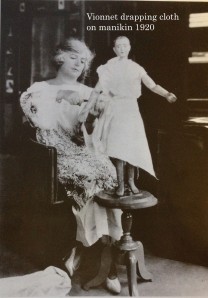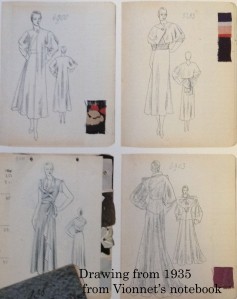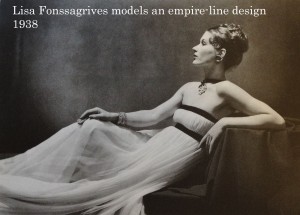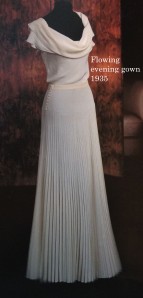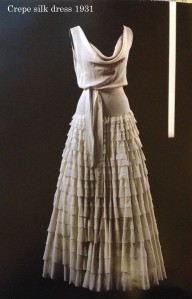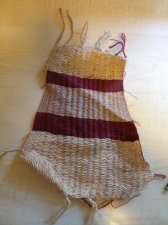Madeleine Vionnet

Madeleine Vionnet is most well known for introducing the Bias cut to the fashion world; from this she produced beautiful and elegant Grecian-style dresses.
Vionnet was born in 1876, Chilleur-aux-Bois, Loiret France. At the age of 11 she started an apprenticeship and from there carried on working as a seamstress moving to London briefly and then returning to Paris and trained within a well know fashion house called Callot Soeurs and then also went on to work with Jacques Doucet.
In 1912 she opened her own fashion house at 50 Avenue Montaigne which was named “Vionnet”. It was open for a little while before World War 1. “Vionnet” Fashion house was one of the first fashion houses to create ready to wear clothing, this was because The House of Vionnet employed 1,100 seamstresses to create these garments.
In 1922 Vionnets designs were inspired by Ancient Greek Art from which the garments flowed freely around the body and where created using the method of bias cutting. As an Expert Couturier she knew that by cutting cloth on the bias this would draped to match the curves of a women’s body making the designs simple and classic. Many of the designs where made of geometric shapes such as squares, triangles and circles, these where then draped over the body to create a tight fit around the waist and then flared out into a bell shaped skirt. With these designs she completely eliminated the structured dress and created a more comfortable dress. These were based on her love of draped fabric, and worked with fabrics that flowed which meant that the dresses didn’t hide the figure but showed it off, with soft fabrics such as chiffon, tulle, and crepe de chine.
Below is a video showing how Vionnet constructed her garments from the geometric shapes that she cut on the bias (1minuet 05 seconds in is where this is shown.)
Click here to view another video of how Vionnet’s Designers where constructed.
The way in which Vionnet designed her garments was by draping fabric over a manikin, creating the shape and structure she wanted then she would sketch the designs that were successful and then produce the garments.
With the marvellous discovery of the bias cut clothing, Vionnet dominated the haute couture in the 1930’s, with her beautiful gowns. Vionnets vision of transforming the female form, modernised clothing and her unique cuts of fashion guaranteed her her well known reputation.
Below is a quote by Vionnet herself:
“The designer at work has a woman and some fabric, and with these two elements must create something harmonious. Until recently, we abused these two. We seemed to view women’s bodies as shameful objects whose shapes had to be concealed as much as possible. As for the fabrics, we treated them like young children, incapable of managing on their own, for which all sorts of supports were essential: stays, interfacing and stiffeners. I wanted to rehabilitate these two innocents and to demonstrate that a piece of fabric falling freely over an unfettered body can still form a harmonious ensemble. I was looking for the dress that would automatically find its original shape when at rest, like a soldier stepping back into the ranks. The formula for the well-cut dress.”
Something that concerned Vionnet as a designer was her designs being copied. It was common in the 1920’s and 30’s for clothing manufactures to send employees to sketch or photograph the haute couture designs and re produce them in different fabrics. The knock off’s would appear within cities around the world within weeks. Vionnet considered copying the same as theft, and was well known for the saying “Death to copyists!” And therefore fought for copyright laws to be enforced within the fashion industry.
Vionnet closed her house when the Second World War started, but once the war was over she did not reopen the house. She left an important legacy when she closed her shop; she donated a lot of her material such as designs, photographs, books, prototypes and finished garments to the Union française des arts du costume, the forerunner of the Musée de la mode.
Madeleine Vionnet showed her last collection in 1939, and she died in 1975. Until the end of her life she still continued to look at and comment on haute couture. Her legacy still lives on. In 1988 the name “house of Vionnet” was bought by Araund Lummen from which he sold perfume and accessories. The label is now owned by Matteo Marzotto and in March 2010 they unveiled a collection in honour of Vionnet, taking inspiration from the original Vionnet designs, by using draping within the collection.
Thank you for taking the time to look
Please feel free to leave a comment.
Sources :
Jacqueline Demornex (1991). Madeleine Vionnet / Jacqueline Demornex ; preface, Madeleine Chapsal ; photographs, Patricia Canino. London: Thames and Hudson.


